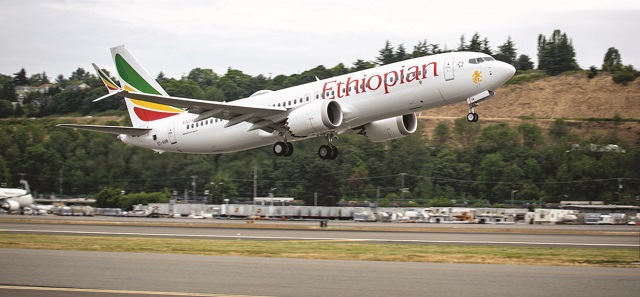
Here’s what experts know now
|The Independent | On March 10 an Ethiopian Airlines 737 MAX 8 crashed shortly after takeoff from Addis Ababa, Ethiopia, while enroute to Nairobi, Kenya. As many as 155 people were killed in the crash. There we no survivors.
It was the second 737 MAX aircraft crash in just months. Last October a Lion Air 737 MAX crashed, killing 189 people. Full investigation on the first accident is still underway, and it is too early into the second since such investigations typically take months, if not years.
What is known so far is that in both cases the planes crashed on the climb out and had unstable vertical speed (suggesting that the pilots lost control of the aircraft). The focus of the investigation is figuring out why that happened.
In the case of the Jakarta crash, Boeing said in a statement that “The Indonesian National Transportation Safety Committee has indicated that Lion Air flight 610 experienced erroneous input from one of its AOA (Angle of Attack) sensors.”
An angle of attack sensor is what the plane’s computer and pilots use to figure out the amount of lift the wings are generating as they cut through the air. If the angle of attack is too steep, lift starts to decrease, eventually creating an aerodynamic stall, where there’s not enough upward lift to keep the plane aloft.
The way to counter that is to point the nose of the plane slightly downward, which safety systems will do automatically, as well as aggressively and loudly shaking the yoke control as a warning. But if the readings are incorrect or inconsistent, both the automation and the humans can be confused into pushing further and further down while they’re trying to figure out what’s going on and what to do about it, causing the sharp nose dive. The situation can escalate quickly.
The Lion Air plane crashed into the sea less than half an hour after takeoff. The pilots had requested permission to return to Jakarta airport, but instead of turning the plane dived, and may have been going as fast as 600 mph when it hit the water.
Any issue with the 737 MAX is concerning because had proved to be a popular model around the world for Boeing, which has delivered 219 of the fourth generation of the 737 narrow-body jet plane and is sitting on orders for more than 4,700 more. This makes it the fastest-selling plane in Boeing’s history.

 The Independent Uganda: You get the Truth we Pay the Price
The Independent Uganda: You get the Truth we Pay the Price



